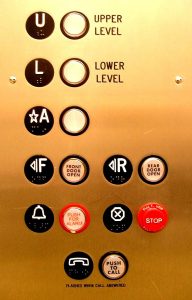
Most business executives are familiar with the “elevator speech”: a very short synopsis of what your company does that can be given to a stranger in 15-30 seconds, or about the length of time you might spend on an elevator with someone. It’s usually a message given in response to the question, “So, what do you do?”
Elevator speeches are useful, and it’s good to have your company’s work summarized neatly in your head to avoid a lot of stammering and phrases like “umm…” or “well, that’s a good question.” Elevator speeches can make you look organized, competent and confident in front of potential clients or other new contacts you meet.
The Why of the Elevator Speech
One bit of information that is often missing from elevator speeches, however, is perhaps the most important bit: the “why” of what you do. Truthfully, most people can say what they do in a concise manner—they’re lawyers, they’re CPAs, they build airplane parts, they do data backup for the Department of Defense, and so on. What’s not always so clear is why the work matters. Yet this vital information can make all the difference in the world in developing new business relationships. Consider these two scenarios:
Interaction A
Person in elevator: “So, what do you do?”
You: “I perform energy audits for small and medium-sized businesses.”
First person in elevator: (thinks to themselves, “Boring!”) “You don’t say.”
You: “Yep.” (awkward silence follows)
Interaction B
Person in elevator: “So, what do you do?”
You: “I perform energy audits for small and medium-sized businesses.”
Person in elevator: (thinks to themselves, “Boring!”) “You don’t say.”
You: “Yep. By looking at a company’s energy usage, I can help save them money. Just last month, I lowered a manufacturer’s electric usage by 15 percent with some simple changes to the company’s processes, and the whole thing will pay for itself in 18 months.”
Person in elevator: “No kidding! Tell me more.”
The What of the Elevator Speech

Which interaction is more likely to lead to a sale down the road? Obviously, it’s B. Your challenge is to rewrite your elevator speech to include the why, without making it any longer. Make it a two-part introduction: a one-sentence “what” you do and a one or two sentence follow up to communicate the “why” or the benefits of your product or service.
The reality is that everyone in the business world does something. What makes your work meaningful is what will make it stand out in your fellow elevator rider’s mind.
